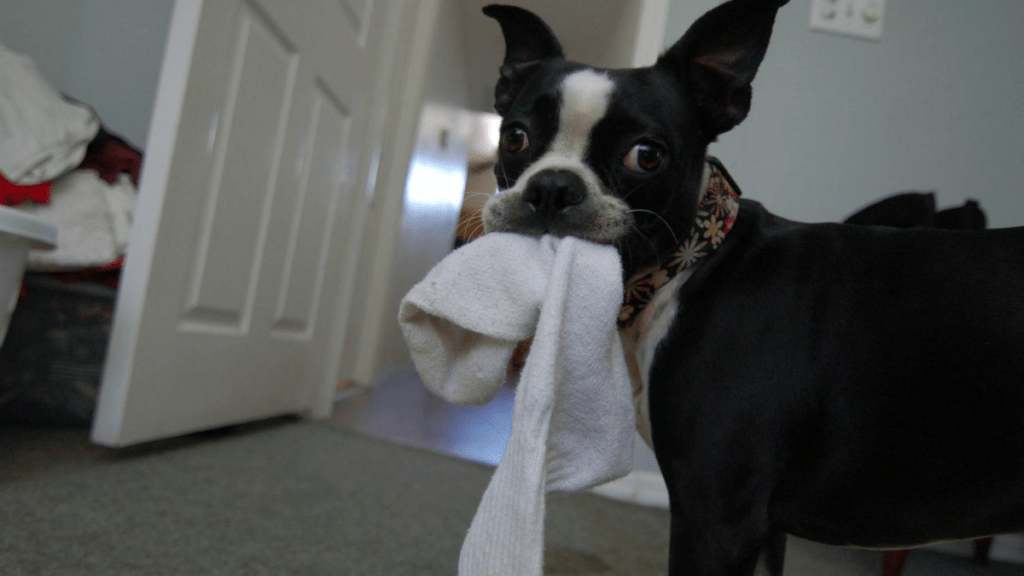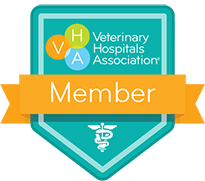Being a dog owner is never easy! It’s like having children, except they’re furrier and don’t speak the same language. Our pups may be affectionate, lovable, friendly, and gosh darn cute, but they also can develop some behaviors that we aren’t too fond of. Keep reading for some tips on overcoming various challenges that will often present at some point during a dog’s lifetime. (Number 5 is top on our to-do list!)
FYI — There is a LOT to say about all of these topics, and we could easily write a blog post about each one individually! The content of this blog is just the tip of the iceberg. Our goal today is to give you a few starter points for each issue, and some things to try at home. If you would like more information about overcoming any of these dog behaviors, please let us know! We would be more than happy to publish another article that dives a bit deeper into a particular behavior and addresses various training techniques for owners to implement.
FYI — There is a LOT to say about all of these topics, and we could easily write a blog post about each one individually! The content of this blog is just the tip of the iceberg. Our goal today is to give you a few starter points for each issue, and some things to try at home. If you would like more information about overcoming any of these dog behaviors, please let us know! We would be more than happy to publish another article that dives a bit deeper into a particular behavior and addresses various training techniques for owners to implement.
Play Biting
This is a behavior that we see most often with puppies. Play biting is a normal, healthy expression for young dogs; the challenge is teaching your puppy that they can display this behavior with other dogs, but not with humans. The best way to correct play biting is to make sure you’re offering your pup ample opportunities for socialization and engagement. Puppy playdates are ideal, and toys and games can also be a healthy focal point for your dog’s biting habit. Tug-of-war games with puppies are NOT encouraged, as this can teach them that biting is acceptable. Save that for when your pup is older.
As for teaching your dog that play biting is not allowed, do NOT pull your hand out of your dog’s mouth. Your dog’s natural instincts encourage him to go after a moving target. When you pull yourself away, your dog’s prey drive tells him to go after you (not necessarily in an aggressive manner, but so as to continue the act of playing). The best thing to do when your dog has a hand or foot inside his mouth is to freeze and discontinue all vocalization and eye contact. When your pup removes his mouth from your hand, quietly offer him a toy instead, or completely disengage. This action on your part will let your puppy know that you are not interested in that type of play.
If your pup isn’t getting the message, try “yipping” loudly and sharply whenever your puppy puts one of your limbs in his mouth. Your goal here is to let your dog know that the play biting hurts (even if it doesn’t). This will hopefully communicate to your dog that biting is not acceptable.
As for teaching your dog that play biting is not allowed, do NOT pull your hand out of your dog’s mouth. Your dog’s natural instincts encourage him to go after a moving target. When you pull yourself away, your dog’s prey drive tells him to go after you (not necessarily in an aggressive manner, but so as to continue the act of playing). The best thing to do when your dog has a hand or foot inside his mouth is to freeze and discontinue all vocalization and eye contact. When your pup removes his mouth from your hand, quietly offer him a toy instead, or completely disengage. This action on your part will let your puppy know that you are not interested in that type of play.
If your pup isn’t getting the message, try “yipping” loudly and sharply whenever your puppy puts one of your limbs in his mouth. Your goal here is to let your dog know that the play biting hurts (even if it doesn’t). This will hopefully communicate to your dog that biting is not acceptable.
Chewing
This is another one of those natural behaviors that can get out of hand if we don’t teach our dogs their proper limits. Dogs understand their surroundings through their noses and their mouths, so chewing on items comes naturally. Make sure that your dog has plenty of toys that she can chew on, especially when she is young, so that she’s not focusing on your furniture or prized possessions. Make sure that the toys you supply are appropriate for your pup’s size and age. Your dog should be supervised at all times, so that you can intervene if she ever decides to chew on something inappropriate.
If your dog has a chewing habit, you may need to “chew-proof” your house (especially if she is a puppy and still learning appropriate behaviors). Make sure to keep any dangerous (eg. electrical wires) or valuable (eg. your grandfather’s watch) items out of reach so that your pup can’t get her mouth on them. Close doors to other rooms so that your dog doesn’t have access without supervision. If you aren’t home to keep an eye on her, confine your pup to an exercise pen or a crate to keep her out of trouble. When you’re home, make sure that your dog is in the same room as you and has plenty of toys lying around. A peanut butter-stuffed Kong is almost always a hit! This will offer acceptable alternatives to your favorite book or throw pillow, and also give you something to offer your dog as an alternative when she tries to chew on something that she shouldn’t.
If you’re really struggling with your dog’s chewing behaviors, consider providing her with some more stimulating activities. Young dogs especially need to stay active, both physically and mentally. Dogs get bored too, and boredom is usually what leads to destructive or inappropriate behaviors. For more information about mental stimulation and enrichment opportunities for your pup, read this blog post.
If your dog has a chewing habit, you may need to “chew-proof” your house (especially if she is a puppy and still learning appropriate behaviors). Make sure to keep any dangerous (eg. electrical wires) or valuable (eg. your grandfather’s watch) items out of reach so that your pup can’t get her mouth on them. Close doors to other rooms so that your dog doesn’t have access without supervision. If you aren’t home to keep an eye on her, confine your pup to an exercise pen or a crate to keep her out of trouble. When you’re home, make sure that your dog is in the same room as you and has plenty of toys lying around. A peanut butter-stuffed Kong is almost always a hit! This will offer acceptable alternatives to your favorite book or throw pillow, and also give you something to offer your dog as an alternative when she tries to chew on something that she shouldn’t.
If you’re really struggling with your dog’s chewing behaviors, consider providing her with some more stimulating activities. Young dogs especially need to stay active, both physically and mentally. Dogs get bored too, and boredom is usually what leads to destructive or inappropriate behaviors. For more information about mental stimulation and enrichment opportunities for your pup, read this blog post.
Pushing Boundaries
Let’s be honest, dogs like to test their owner’s limits. It’s the only way they’ll find out what they can get away with… and what they can’t. Training inconsistencies during a dog’s first year or two of life can also confuse your dog, and he simply may not know what’s allowed and what isn’t. Make sure your dog isn’t getting mixed messages, and that training is consistent.
For example: It’s 10pm and your dog decides to take a nap on the couch with you while you watch TV. He isn’t allowed on any furniture, but you’re tired and you don’t feel like making him jump down. Plus, no one else is around and there’s plenty of room for the two of you. He looks so dang cute curled up next to you and snoring… We know that there are moments when it’s hard to be consistent, but inconsistency is not fair to your dog. Next time he jumps on the couch, it won’t be such an ideal moment and he’ll get disciplined. He doesn’t understand why it was okay to sit next to you last week but not this week. Keep things consistent so that he understands his boundaries. Otherwise you’ll probably be vacuuming his fur off of your couch cushions for the rest of his life.
Remember, it’s never too late to teach your dog boundaries. If your puppy lacked proper discipline in his early years, he’s still perfectly capable of learning as an adult. Training takes patience, time and consistency.
For example: It’s 10pm and your dog decides to take a nap on the couch with you while you watch TV. He isn’t allowed on any furniture, but you’re tired and you don’t feel like making him jump down. Plus, no one else is around and there’s plenty of room for the two of you. He looks so dang cute curled up next to you and snoring… We know that there are moments when it’s hard to be consistent, but inconsistency is not fair to your dog. Next time he jumps on the couch, it won’t be such an ideal moment and he’ll get disciplined. He doesn’t understand why it was okay to sit next to you last week but not this week. Keep things consistent so that he understands his boundaries. Otherwise you’ll probably be vacuuming his fur off of your couch cushions for the rest of his life.
Remember, it’s never too late to teach your dog boundaries. If your puppy lacked proper discipline in his early years, he’s still perfectly capable of learning as an adult. Training takes patience, time and consistency.
Jumping on People
This is a tough one, and we totally get it. We love when we come home after a long day and our dog just wants to stand on her hind legs and give us a big dog hug. But our next house guest may not appreciate the love quite as much as we do. Training your dog not to jump on people is going to go back to behavior #3 (teaching her boundaries). You HAVE to be consistent. Your dog will not understand that it’s okay to jump on you, but only you and no one else. This training is going to take a lot of repetition and cooperation.
When working on this behavior, it will help to keep your dog on a leash as you greet people. Your dog may try to pull on the leash and jump up, but stay strong. Wait for your dog to display an appropriate behavior (all four paws on the ground, sit down, lay down, etc.). As soon as your dog shows this acceptable behavior, allow the dog to greet the person. The same technique goes for when your dog greets you.
You may have to get help from your guests for this part of your dog’s training. Tell them to not speak to, look at, or pet your dog until she displays the appropriate behavior. Make sure the greeting remains calm. If your dog starts to jump, cut off the greeting, be still and quiet, and avoid eye contact.
When working on this behavior, it will help to keep your dog on a leash as you greet people. Your dog may try to pull on the leash and jump up, but stay strong. Wait for your dog to display an appropriate behavior (all four paws on the ground, sit down, lay down, etc.). As soon as your dog shows this acceptable behavior, allow the dog to greet the person. The same technique goes for when your dog greets you.
You may have to get help from your guests for this part of your dog’s training. Tell them to not speak to, look at, or pet your dog until she displays the appropriate behavior. Make sure the greeting remains calm. If your dog starts to jump, cut off the greeting, be still and quiet, and avoid eye contact.
Not Coming when Called
It’s so embarrassing when we call our dog in front of our friends and he promptly turns around and walks in the opposite direction. Teaching your dog how to “come” is one of the most important commands in the book. If possible, teach your dog this response as soon as you welcome him into your family. Never command your dog to “come” and then discipline or punish him. Your dog should always be rewarded with praise or a treat when he obeys you.
When training your dog to come when called, start out in a quiet area with no distractions. As he learns the command, slowly introduce other sights, sounds, and stimuli. Your dog needs to know that regardless of whatever else is around him, he ALWAYS needs to obey you.
When training your dog to come when called, start out in a quiet area with no distractions. As he learns the command, slowly introduce other sights, sounds, and stimuli. Your dog needs to know that regardless of whatever else is around him, he ALWAYS needs to obey you.
Leash-Pulling
If walks with your dog are a struggle, and you find yourself spending more time keeping your dog on track than actually walking forward, you may need to temporarily forego the long bouts of exercise and focus for a bit on leash training. Stick to a familiar area like your own yard or street, since this is an area that your dog is more familiar with. You want your dog to be focused on you, not on the new and exciting things she’s seeing.
Hold the leash in one hand, and keep treats accessible to the other hand. Start out slow — take just a step or two forward. If your dog moves with you, immediately say “yes” and offer a treat. Repeat a few times, to show your dog that each time she moves with you, she is rewarded. Gradually increase the amount of steps you take, so that there is more time in between rewards. Make sure to not move too fast, and go at your pup’s pace. Once she is accomplished at walking with you in a straight line, start to incorporate some turns. Eventually, your dog will be able to walk with you as you move in any direction, and you should be able to also vary your walking speeds while still keeping pace with your pup. Once you feel confident that your dog knows and understands that she must walk with you and not pull on the leash, bring her to a larger and more interesting area. Start from the beginning, moving just a few steps at a time, and build from there until your pup can walk next to you with ease and confidence.
Have you heard of a Gentle Leader? This leash extension is the perfect tool for training dogs who love to pull on the leash. It goes around their muzzle, and gently applies pressure whenever they pull. That pressure is applied in a spot that encourages submission (think of a mother dog disciplining her pup). Harnesses are NOT recommended for dogs unless it’s medically indicated, because owners have very little, if any, control of their dog when using a harness.
Hold the leash in one hand, and keep treats accessible to the other hand. Start out slow — take just a step or two forward. If your dog moves with you, immediately say “yes” and offer a treat. Repeat a few times, to show your dog that each time she moves with you, she is rewarded. Gradually increase the amount of steps you take, so that there is more time in between rewards. Make sure to not move too fast, and go at your pup’s pace. Once she is accomplished at walking with you in a straight line, start to incorporate some turns. Eventually, your dog will be able to walk with you as you move in any direction, and you should be able to also vary your walking speeds while still keeping pace with your pup. Once you feel confident that your dog knows and understands that she must walk with you and not pull on the leash, bring her to a larger and more interesting area. Start from the beginning, moving just a few steps at a time, and build from there until your pup can walk next to you with ease and confidence.
Have you heard of a Gentle Leader? This leash extension is the perfect tool for training dogs who love to pull on the leash. It goes around their muzzle, and gently applies pressure whenever they pull. That pressure is applied in a spot that encourages submission (think of a mother dog disciplining her pup). Harnesses are NOT recommended for dogs unless it’s medically indicated, because owners have very little, if any, control of their dog when using a harness.
Many of these training approaches can be applied to scenarios other than those we mentioned above. Consistency, patience and positive reinforcement can go a long way towards teaching your dog proper behaviors and encouraging him to respect and obey you.






